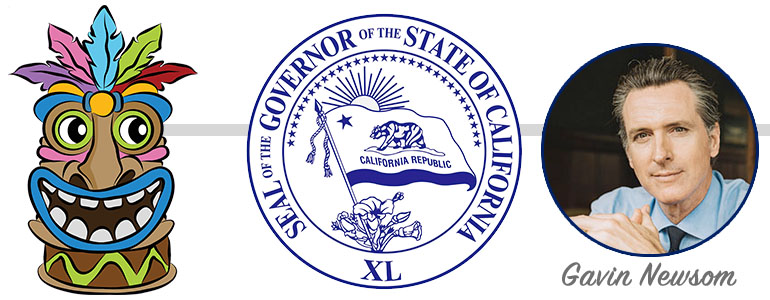
Governor Gavin Newsom, First Partner Jennifer Siebel Newsom, and Assemblymembers Kevin McCarty (D-Sacramento) and Al Muratsuchi (D-Torrance) visited Encina High School and Greer Elementary School in Sacramento – two community schools co-located on the same campus to provide whole family services across the age spans.
The Governor and First Partner met with students participating in the school’s various community school programs made available after being awarded $1 million in 2021 to support tutoring before and after school, peer mentoring programs, trauma-informed mental health supports, mobile health care for families, and English classes for adults in the surrounding community.
What Governor Newsom said: “California is creating schools where every student and their families can thrive. If a kid goes to school hungry, it makes it difficult to learn. That’s why we’ve implemented free school meals for all of California’s kids, including those here at Greer Elementary and Encina High School. As education remains under assault in states across the U.S. – from book bans and speech suppression, to the othering of our students, parents, and teachers – we are improving student learning, health, and wellbeing by providing full-service schools for our students and their families.”
What this means: Through California’s $4.1 billion community schools investment, parents and students throughout California will have more access to schools that provide high-quality instruction and culturally competent wraparound services, including mental health support, tutoring, nutrition programs, free school meals, health care, counseling and other social assistance.
First Partner Siebel Newsom added: “Community schools are both a haven for learning and a community hub with resources and support that allow us to nurture children in mind, body, and spirit. These schools take a holistic approach to education by offering students and families a variety of services that meet the needs of the community, such as free meals twice a day, physical health screenings and mental health counseling, free before, after, and summer school programs, transitional kindergarten, and more. Community schools build on California’s commitment to giving ALL children the best start in life and providing families with the resources they need to thrive.”
How California is Transforming Education:
-
Universal Pre-Kindergarten: California’s children will have access to crucial high-quality instruction by age 4 – effectively adding a new grade to the traditional K-12 system – regardless of a family’s income, with full-scale implementation anticipated by 2025.
-
Universal Extended-Day Learning: All elementary school students will have access to before- and after-school programs, as well as summer learning opportunities, by 2025.
-
Universal Free Meals: No student will need to learn on an empty stomach, with all students having the choice of two free, nutritious meals per day – regardless of income or family status.
-
Youth Behavioral Health: Youth ages 0-25 will have access to a revamped youth behavioral health system, including an online one-stop hub and billions invested to integrate mental health services with schools.
-
College Savings Accounts: Every low-income public school student will have an account opened in their name with a seed deposit of $500 to $1,500 – cultivating a college-going mindset, building generational wealth, promoting college affordability, and developing financial literacy.
-
Tutoring + Literacy + Math: Schools will help students accelerate academic progress and mitigate learning loss due to the COVID-19 pandemic with more than $8 billion invested in tutoring, increased instructional time, and other student supports.
-
More Teachers, More Counselors, and More Paraeducators: Lower staff-to-student ratios is more support for students. Ratios will be lowered across settings and $1.1 billion in annual funding for high-poverty schools to hire up to 5 more staff each.
